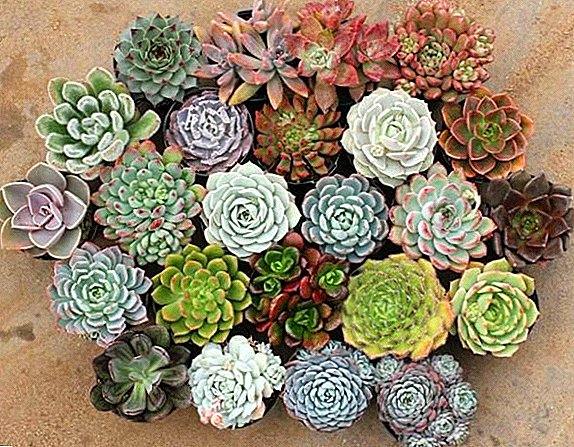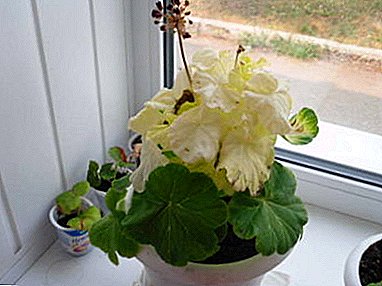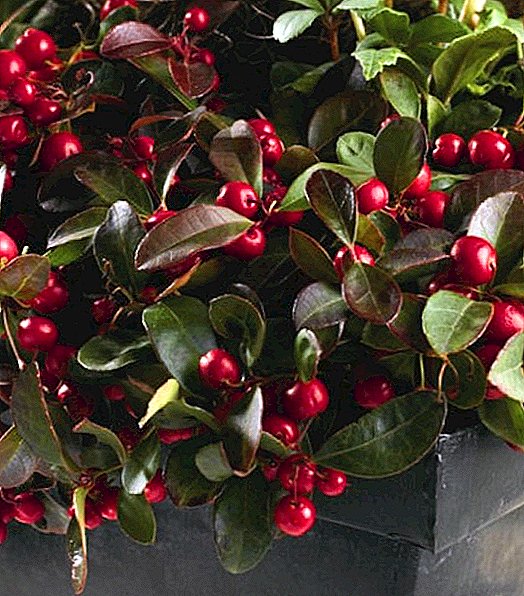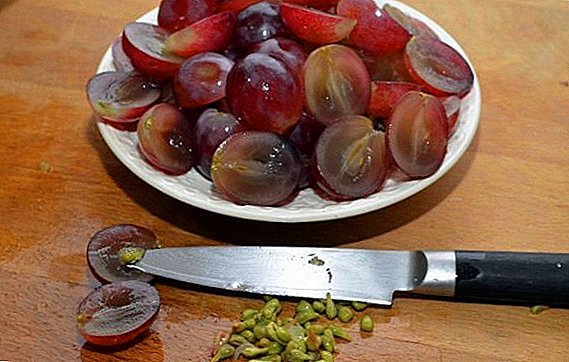 The phlox paniculata is a perennial flower that will become a bright and fragrant addition to your landscape design. These flowers, thanks to their rich palette of shades and variety of varieties, were loved by flower growers, florists, and landscape designers. The plant is unpretentious in the care, which gains favor. The family combines many varieties of hybrids. What grades of phlox paniculata to choose, where to plant and how to care for them, read on.
The phlox paniculata is a perennial flower that will become a bright and fragrant addition to your landscape design. These flowers, thanks to their rich palette of shades and variety of varieties, were loved by flower growers, florists, and landscape designers. The plant is unpretentious in the care, which gains favor. The family combines many varieties of hybrids. What grades of phlox paniculata to choose, where to plant and how to care for them, read on.
Biological features
The flower got its name in Greece, where it was associated with a flame. The fact is that the "progenitors" of modern phlox were distinguished by a bright red color.
Over the years, in the process of hybridization and selection, new varieties of the most unexpected forms of flowers and shades were bred (and continue to be bred). There are no yellows yet.
The phlox paniculata is a perennial herbaceous flower, the height of which is up to 150 cm. A powerful root system is the basis of the life of the plant and a guarantee that it will decorate your garden for years.
Compared with the lush buds that are located on fragile stems, the leaves of phlox look small, their shape is oval or lanceolate-elongated.  The plant attracts attention and is remembered for its rich inflorescences of bright color. Flowers exude a pleasant aroma. If you combine the varieties correctly, the period when the phlox is paniculate blossoms will be in your garden all summer and autumn.
The plant attracts attention and is remembered for its rich inflorescences of bright color. Flowers exude a pleasant aroma. If you combine the varieties correctly, the period when the phlox is paniculate blossoms will be in your garden all summer and autumn.
The flowering time of one flower is 7 days. And in their inflorescence there are several dozen.
No less popular are such types of phlox as awl-shaped and spread.
After flowering, the aerial part of the plant dies off. Simultaneously with this process, buds are laid in the ground, from which a new bush will appear next year, and it will expand every year.
Popular varieties
Phlox varieties of paniculata differ in a huge variety - as much as this flower is loved by growers and breeders. The most popular ones are:
- "Lizzie" - owner of flowers of an attractive soft red color. In the center of the flower is placed a pale pink asterisk, which makes the petals bright.

- "Count Zeppelin" distinguished by a truly graphical contrasting color. Pale pink flowers "look" at the world with rich purple eyes.
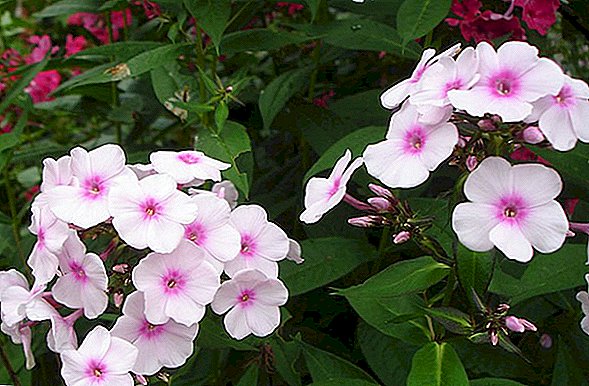
- "Cosmopolitan" - a plant 110 cm high. It is a real hero. It also differs in its splendor and richness of peduncles of a pleasant pink color.

- Blue Paradise ('Blue Paradise'). The variety is the owner of the petals of the original blue or blue color, which in the dark acquires a special brightness. It is very popular among florists.

- "Green Lady" - hybrid decorative grade phlox paniculate. Its highlight - exotic sharp buds that do not bloom.
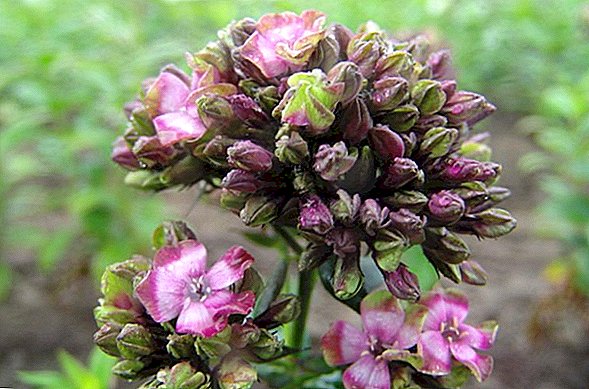
- "Secret" - Breeding tall variety, which often appears in various flower exhibitions and compositions due to its rich blue or purple color.

- "Sonata" - flower symphony of red and white petals.

- "Snow White" - A variety that is distinguished by huge snow-white inflorescences.

- Forget-Me-Not - tall phlox chameleon: changes color depending on the weather. On a sunny day, its inflorescences are pale lilac, in rainy weather - bright blue.

Rules for selecting planting material when buying
The choice of high quality planting material is one of the most important tasks. Experienced growers are advised to give preference to domestic varieties that endure a sharp change of climatic conditions, resistant to diseases and pests.
As for the color characteristics, it all depends on the taste. It is worth carefully planning the landscape design, combining plant varieties according to their color, flowering time and height of the bushes, so that later you don’t have to redo and replant anything.
Important! The site should be planted with a sufficient amount of planting material: 10 square meters. m. need to plant 80-90 tall seedlings or 90-110 undersized.
It is worth carefully inspecting the seedlings to make sure that they are healthy and not affected by pests.
Choosing the right landing site
Despite its unpretentiousness, phlox paniculata requires to observe certain rules of fit and care. The first thing you need to pay attention to is the choice of a seat. 
Lighting
The plant prefers shaded places, overheating of the root system is extremely harmful to it. In the sun-drenched places, the flowers quickly burn out, lose their attractiveness, and become depressed.
Important! The brighter the color of phlox flowers, the less sunlight it needs. For example, blue buds will look beautiful only if you plant a plant in the shade.
The soil
Flok beds advise to plan on soils with a high composition of humus and a well-established drainage system. If soils with a high level of acidity prevail on your site, then they will have to be “fertilized” with lime, since the plant does not take root on oxidized lands.
The optimal soil type for the plant is sandy soil. With proper watering in such a bed, the plant will feel great. 
Planting seedlings
Phlox seedlings should be planted in pre-prepared shallow pits in spring or autumn. The bottom of the fossa should be covered with compost or biohumus. If the soil is loamy, add sand and organic fertilizer to the hole. Placing the plant in the recess, you should horizontally straighten its roots.
It is important to keep a distance between seedlings of about 50 cm. This is necessary for the proper development and functioning of the root system.
Care tips for lush flowering
When planting phloxes, you should be aware that from time to time you will have to help your wards in the process of their growth: water, loosen the ground, fertilize. Proper care is the key to lush flowering.
Did you know? The popular name for phlox is calico. All due to the fact that his inflorescences are associated with the variegated and light color of calico fabric.
Watering
On dry days, phlox should be watered once a day (in the morning or in the evening) at the root. One square meter needs to spend one and a half to two buckets of water (one bush consumes about two liters). Watering plantations with cold water in hot weather can adversely affect their livelihoods: fragile stems in this case burst. 
Weeding and soil care
Periodic loosening of the soil under the phloxes is a guarantee of their proper growth and development. The plot should be kept in order and cleaned of weeds that can damage the plant’s root system or become a source of its diseases.
Did you know? Because of the spherical or umbellate shape of the inflorescences, in which dozens of flowers are combined, phlox is interpreted and revered as a symbol of reciprocity and unity.
Top dressing
To help the root system of phlox paniculata form properly, it is advised to feed the plant with organic and mineral supplements.
The optimal fertilizer is liquid manure with potassium salt or phosphorus. Fertilizing bushes need five times: in May, June, at the beginning and end of July. The last fertilizer should be carried out during the period of seed formation.
Pruning
Faded and dried tops of phlox need to be cut, then cover the rhizome with soil, peat or wooden bran to prepare for winter and protect from frost. 
Wintering
Flok bushes are quite cold-resistant, but still worth safe play. In the case of a winters with little snow, frost can damage the plantings, so it is worthwhile to additionally wrap them with straw, coniferous branches or leaves of trees. The snowy winter promotes excellent "rest" of plants.
Breeding methods
Florists with experience recommend at least once every 5-6 years to replant phloxes in order to renew and preserve varieties. Transplantation can be carried out both in spring (April, May) and in summer (August). Reproduction phlox paniculata occurs in several ways.
Growing from seed
After the wilting of the pollinated flower on the stem of the plant, the seeds are tied in a separate fruit box. It is worth noting that only an insect with a long proboscis is able to pollinate a flower.
2-3 seeds fit in one box. Mature seeds, if not harvested in time, fall into the ground, and self-seeding occurs.
The cultivation of phlox paniculata from seeds begins in early spring. Seeds are placed in pots or specially equipped boxes. Seedlings need to dive several times, as they rapidly grow upwards.  The next stage is transplanting seedlings into a greenhouse, and only in May they are advised to be planted in open ground.
The next stage is transplanting seedlings into a greenhouse, and only in May they are advised to be planted in open ground.
Division
This technique requires a minimum amount of effort. In early spring, after the snow melts, healthy bushes need to be dug out of the ground and their rhizomes should be cleared from the ground. Then you need to carefully separate the root cervix with your hands, and also separate the plexus of the roots.
As a result, several separate parts are obtained from the bush, each of which should contain 3-4 growth buds and thick stems. The divided parts are ready for planting in the places prepared for them.
Important! Experienced florists are advised to divide the rhizome in order to remove its old woody part, in which the nutrition process deteriorates and weakens. Neglect of this measure of care for a plant can lead to its partial extinction, depression or total death.

Cuttings
It is recommended to carry out before the plant has flowered. The optimal time is June. Cut the cuttings from healthy stems with special garden shears.
The lower incision should be done below the kidney, then shorten the middle leaves, and cut the top ones. Ready cuttings placed in the ground and daily watered five times with warm water. After 3-4 weeks, the cuttings will take root and sprout.
Diseases and pests: prevention and treatment
Phlox are fairly resistant to pests and diseases. But often improper care causes the plant a lot of problems. The wrong choice of landing site and the lack of nutrients - the main cause of phlox diseases.
The most common diseases and pests of phlox:
- nematode - a microscopic worm that loves acidic soils. Parasites infect all parts of the plant. A bush afflicted with the disease will have to be removed from the site and burned;

- powdery mildew - fungal infectious disease, which dulls the growth and development of bushes, deprives them of attractiveness and decoration. The plant is covered in gray. Affected leaves and shoots must be eliminated so that the infection does not spread. The remaining bushes to handle 0.1% solution of colloidal sulfur for 7 days;

- spotty leaves. First, brown spots appear on the foliage, and soon the leaves fold and dry. This disease is a consequence of excessive illumination. Phlox will have to be transplanted to shaded areas;

- alternarioz - the appearance of brown spots on the leaves and stripes. Your flower needs fertilizing with mineral fertilizers;
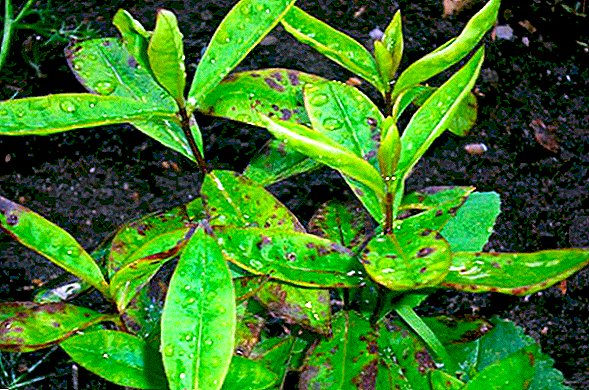
- severe frost or prolonged drought can harm the flowers. Often these factors lead to their death. But at the same time, phloxes are quite viable: one small root is enough to reanimate the plant.
Properly diagnosed disease and timely action will help you protect your flower beds and keep them attractive.
Application in landscape design
Bright flox floret flossa help to create a cheerful landscape design, ennoble flower beds, front gardens, alpine slides, rose gardens.
Flok plantings can be easily transformed into elegant color compositions, for this you just need to choose and experiment with the varieties of phlox paniculata, of which there are many (description and photos of some of them you have already seen above).
Did you know? Phlox are especially popular in Japan. Every year in March and June, the country hosts a festival of phlox blooming, Hanasampo, which translates as a flower walk.
Phloxes look spectacular and in combination with other garden flowers. For example, bright inflorescences of phloxes harmonize with white flowers of chamomile.  In summer, phloxes prefer to coexist with carnations, alpine asters, geraniums, veronians, and small-scale artists. These plants have approximately the same conditions of care, which is important when making flower beds.
In summer, phloxes prefer to coexist with carnations, alpine asters, geraniums, veronians, and small-scale artists. These plants have approximately the same conditions of care, which is important when making flower beds.
Autumn floksovye beds should diversify barberry or autumn crocus. The phlox paniculata is not just a favorite of flower growers and florists, but also the main tool of work of landscape designers, the leading figure in flower exhibitions.
The motley color palette of the flower, its lush inflorescences, the fragrant aroma will not leave indifferent any esthete. But for such an effect will have to make rational efforts.
















